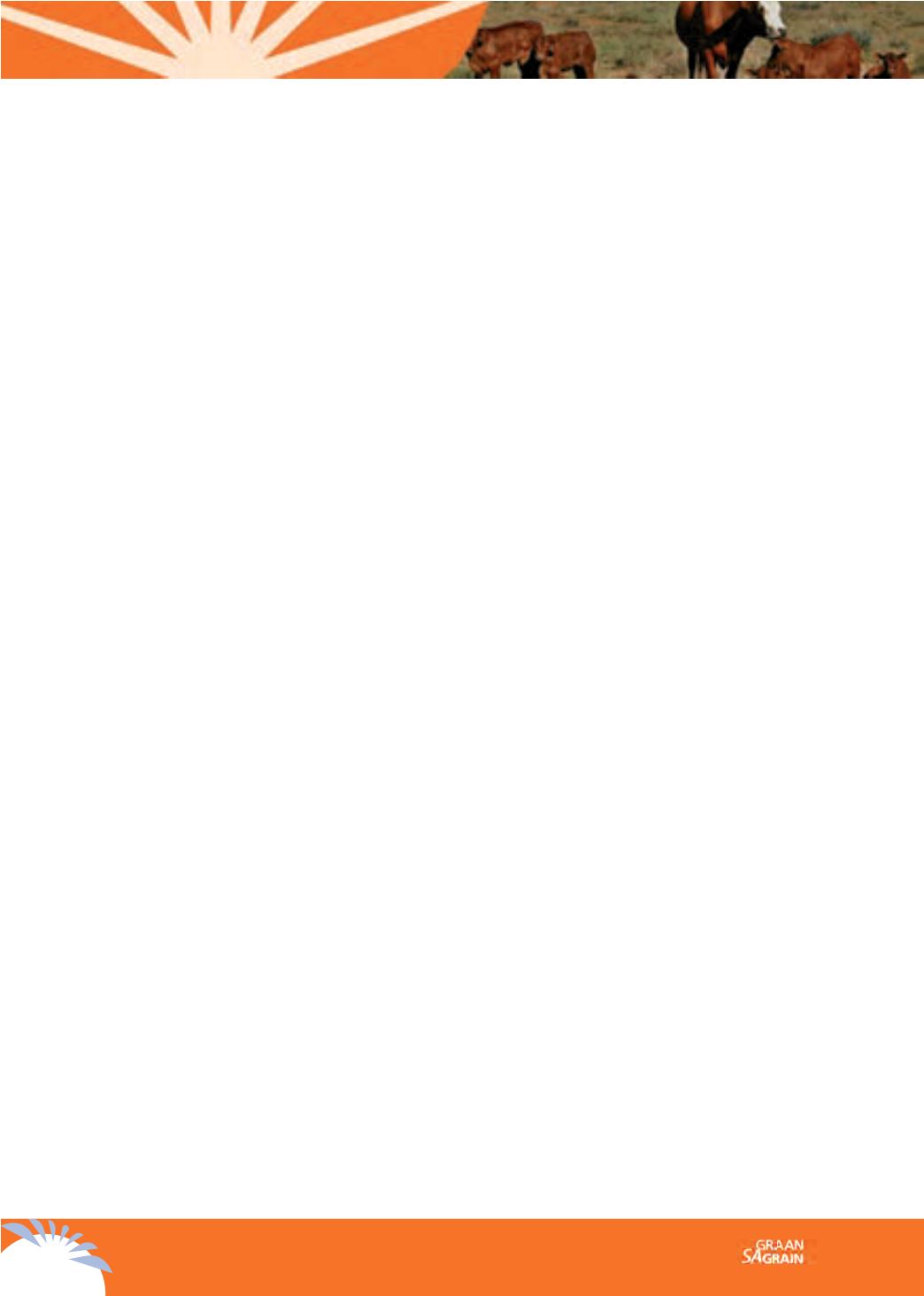

106
GRAANGIDS
2017
GRAIN GUIDE
WHAT DOES A FUNCTIONAL
FEMALE ANIMAL LOOK LIKE?
Female beef cattle deserve special acknowledgement
,
because they represent approximately
97% of the breeding herd and they transform grass, shrubs and crop residue into a nutritious
product for humans.
Requirements for a functional female animal
A functional beef cow should meet four requirements:
1. She needs to have a beneficial functional appearance.
2. A cow needs to be adaptable to her surroundings.
3. She needs to maintain a high reproduction rate.
4. A female animal should produce sufficient milk and high-weight weaners.
These requirements are discussed briefly below.
Functional appearance
The hormonal balance of an animal determines its appearance. Approximately 10% of a new
heifer group will show visible reproductive weakness. Cows that skip may have developed a
hormone imbalance. Evaluate and eliminate animals showing a poor functional appearance.
A highly fertile cow and heifer are beautifully feminine, with a narrow face and neck and a
smooth, shiny coat. Older cows display a wedge shape.
Female animals that have low fertility have a rough, dull coat and the front part of their body is
deeper (in other words the wedge is the wrong way around), with under-developed genitals. These
animals tend to have longer legs, with longer periods between calves. Heifers that are in heat
regularly have developed udders that are visible. A functional udder is important. Bottle weaners
should be culled.
A medium bone structure and frame size are ideal. Sound hooves are important in the sandy
areas. A black hoof with a beneficial heel depth is the best combination.
Adaptability
A breeder must have a clear understanding of the way in which each environmental effect influ-
ences the animals and which animals react the best to each effect.
Beef cattle, for example, are comfortable at temperatures that vary between -1°C and 27°C. Their
body temperature is 38,6°C. As soon as temperatures exceed 27°C, it becomes important for the
animal to possess certain adaptation characteristics to enable her to maintain her body tempera-
ture. If the animal is unable to do this, her appetite declines and she does not do well. Important
characteristics are a smooth, shiny coat, a thick, loose hide and adequate sweat glands. The
conformation is respiratory, i.e. deep, slightly flatter forequarters so that more of its skin becomes
an area for heat radiation. Animals in moderate areas are metabolic, with a round conformation
through the ribs to retain heat.
Animals that are not adapted to the higher temperatures will breathe more rapidly (normal is
26 - 30 breaths per minute) and the foetus will resorb more easily, which has a negative effect
on reproduction.
Reproduction
The birth of a healthy calf each year beats all other selection objectives as far as value is con-
cerned. Cows not in calf must be held back as soon as the calving percentage drops below 75%.
1
2
3

















